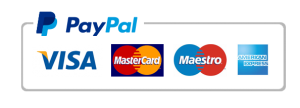200 words discussion board
200 words discussion board
(200 words discussion board)
Question description
Theories in nursing help nurses as a guide in everyday practice. Following a concept in practice helps me to develop an overall view and better understanding of the patient, the disease, and the environment he or she is in. I can orientate and focus on these aspects and develop a goal for my patient. Each situation in practice requires different methods and approaches of care. As nurses we must always act in the best interest for our patient. We should borrow theories from other professionals if it ensures best quality care for our patient. I believe that Madeleine Leininger’s Theory on Cultural Care and Diversity is the groundwork and foundation of care for the future. As the world is changing around us, the culture is changing as well. Every nurse must be familiar with Leininger’s principles.
This class was very good and I learned a lot of new insights on principles in nursing, especially in theories of a more holistic approach. I enjoyed reading this book as it also described the background of the different nursing theorists. Betty Neuman’s and Margaret Newmann’s conceptions stood out to me. Both theoreticians experienced how to live with someone who is suffering from chronic disease in their own home. I found that these two ladies really understood the life of people with long-lasting sickness as their thoughts and ideas of caring and goal achievement reflected in their theories. Certainly, other nursing pioneers have very helpful theories as well. Betty Neuman’s father was diagnosed with renal disease and Margaret Newman’s mother suffered of ALS (Smith & Parker, 2015). I value the ideas and biographies of these two amazing ladies because my ten year old son is chronically ill. This is the reason why I’m so passionate about renal patients. This class really opened my heart and eyes that I need to move forward and continue with my career focused on pediatric nephrology. I love working with pediatric renal patient as I learned so much during my son’s journey. I would call myself a more of a spiritual person. I found out first hand that by using holistic approaches in nursing results in very positive effects on the patient. Some of us may have struggled with Martha Rogers’s ideas on the Unitary Being, Madeleine Leininger’s Theory of Culture Care and Diversity, Jean Watson’s outstanding Theory on Human Caring, Margarete Newman’s Theory of Health as Expanding Consciousness or Parse’s Theory of Human Caring. Even though the lecture required a lot of interpretation, the long hours of reading and research were worth the time for me. I gained knowledge of so many interesting new insights and ideas of caring from this lecture. I always enjoyed reading the discussion post to learn what your concepts and ways of caring are. In nursing we always have to look forward, be flexible and expand our knowledge. Following these principles will help us to act in our patient’s best interest.
While my son still struggles of focal segmental glomerulosclerosis (FSGS), I have been on both sides. Caring as a nurse and seeing my son receiving care as a patient. I’m a very holistic person and used many different approaches of helping my son. I found out that nurses who give the best care are the ones who take time to understand and show compassion. I can always tell while my son is receiving care if the nurse really has her heart in caring or if it is just a job. My son almost passed away at the age of three as he fought a very hard battle with his kidney disease. It was hard to watch, thankfully at this time we were at Denver’s children’s hospital. I’m sure you can all guess which amazing nursing theorist thoughts and ideas reflect on the patient’s care process there. Jean Watson! Today my son is ten years old and despite his diagnoses with this difficult disease, he is living a normal life. This is only possible because kindhearted nurses treated my son as a whole person and looked behind the disease. We all worked together in assisting him to find meaning and focus on life goals. I could write another page of what my son went through but I’d rather focus on today as I’m overjoyed on how good he is doing.
This class is almost over now, I wish each of you the best for your future. As the peaceful light is given to us with the Christmas spirit, go on and spread it for your patients. You may be there to shine for them and change their lives for the better. I would like to share one of my favorite quotes from Paulo Coelho with you, “Warriors of light are not perfect. Their beauty lies in accepting this facts and still desiring to grow and learn.” (Coelho & Costa, 2014).
Take care, good luck on your journey in earning your bachelorette degrees in nursing and Merry Christmas, Christine
References(200 words discussion board)
Coelho, P., & Costa, M. J. (2014). Warrior of the light: A manual. New York: Thorsons, an imprint of HarperCollins Publishers.
Smith, M.C. & Parker M.E. (2015). Nursing theories and nursing practice (4thed.).


